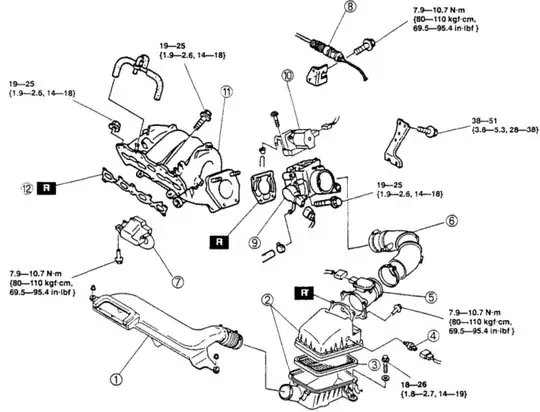On many engines I've seen coolant is circulated through the Idle Air Control valve and the throttle body. One such example is the Mazda 2L 4 cylinder FS used in the 626. The IAC is ECU controlled, and there is a coolant temperature sensor, so what would be the purpose of running coolant through the IAC?
You can see in this diagram for example that it flows in the IAC then out through the Throttle Body ( or maybe the opposite direction, I'm not sure ):
There is a great picture here which shows exactly how the coolant flows through the IAC to the TB.
